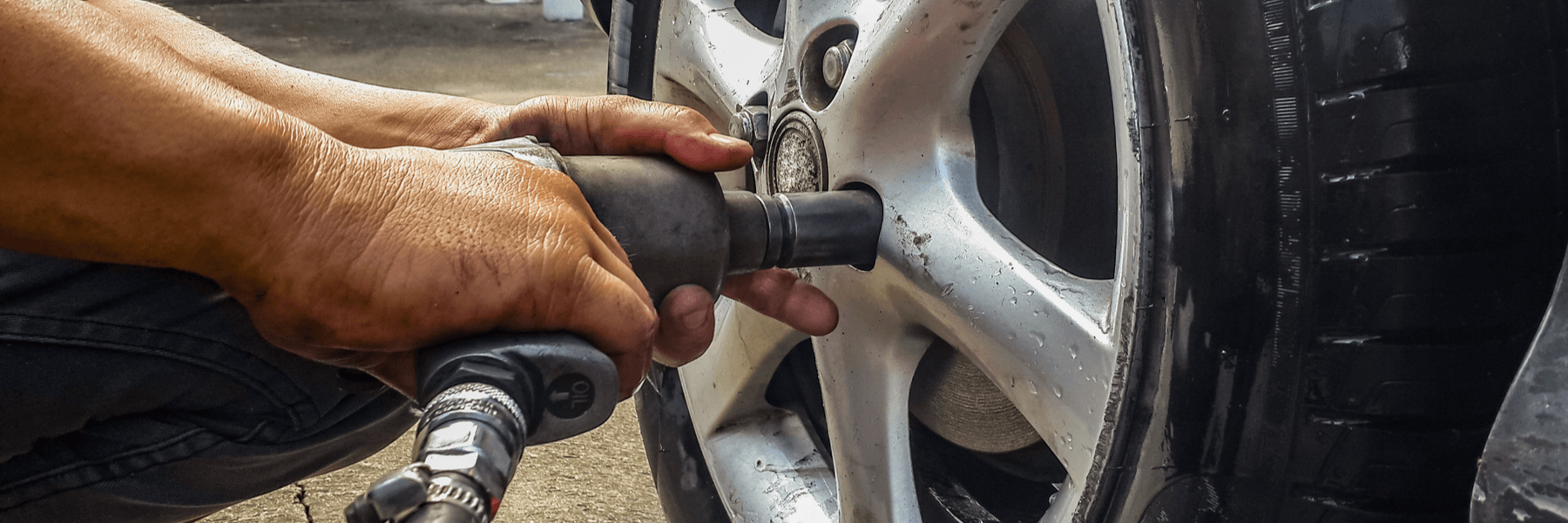With autumn and winter right around the corner, it's time to start thinking about all your cold-weather responsibilities--like pulling those coats from the back of your closet and stocking up on snow shovels. However, as you're enjoying the cooler weather, don't forget about your vehicle. Temperature changes can have a big impact on things like tire pressure--which is what we're covering in today's tire service FAQs.
The Importance of Tire Pressure
Although it might seem like your tires themselves are supporting the weight of your vehicle and everything it carries, it's actually the air inside those tires that does all the work. That's why proactive maintenance is so important--and also why a change in tire pressure can influence many of the things you take for granted on the road:
- Steering control: Your vehicle might feel less responsive if your tire pressure isn't ideal.
- Tire wear: Although tire tread wears down at different rates depending on your driving habits, over- or under-inflated tires wear more quickly and need to be replaced more often. (Hint: Over-inflation tends to wear the center of your tire tread, while under-inflation impacts the edges.)
- Fuel efficiency: Improper tire pressure can cause your vehicle to use more gas because it's working harder.
- Ride smoothness: Do you like a smooth, uninterrupted ride? If so, tire pressure is especially important for you.
- Performance: Your vehicle may not handle, brake, or "feel" right if your tire pressure isn't where it should be.
For these reasons and more, tire and vehicle manufacturers have a recommended tire pressure psi (pound per square inch). To find your recommended psi, you'll need to consider the make and model of your vehicle, the type of tires you're using, and more. For most vehicles, this may fall between 30 and 50 psi; larger vehicles like buses or heavy-duty trucks may have tires inflated between 80 and 100 psi.
But why does tire pressure change in the first place, and what does that mean for you? Let's find out.
Why Does Tire Pressure Change?
Tire pressure changes depending on a few factors. For example, it may decrease over time or if there's a small puncture you haven't noticed yet. However, the most common cause of tire pressure fluctuation is one you'll face every season: changes in the weather.
Air is a gas, which means it follows certain rules of physics--like expanding when it's warm and compressing when it's cold. That's why chillier nights could cause your vehicle to report a tire pressure issue. The general rule of thumb is that pressure drops one or two psi for every 10 degrees.
However, tires warm up when you use them. This explains why your vehicle might "change its mind" and stop reporting that tire pressure issue after you've driven for a while. (Hint: You'll generally see an increase of one psi every five minutes for about 20 minutes.)
When and How to Check Pressure
Because tire pressure is so important, you should get into the habit of checking it--or having it checked with tire service--at least once a month. You could also make a habit of checking psi every time you fill your gas tank (and don't forget to check your spare, too).
Keep in mind that you shouldn't rely on your vehicle's onboard computer to remind you. Unfortunately, your tire pressure warnings only go off until tires are about 25% below ideal inflation--but you'll start experiencing problems at around 5%.
How to check tire pressure
Your best bet is to keep an air gauge in your vehicle. While you can use the ones offered at gas stations, they aren't always accurate.
You can also stop in for tire service whenever you suspect an issue. That way, you know you'll have expert advice and recommendations right at your fingertips.
How to inflate tires
If you find out your tires are under-inflated, try following these steps:
- Remove valve stem caps.
- Grab your air pump or compressor.
- Attach and seal the nozzle. (If you hear air escaping, repeat the process.)
- Inflate the tires using the compressor or pump's gauge, or for about 10 seconds.
- Double-check your tire pressure.
- Replace valve stem caps.
If you don't have an air pump or compressor, don't worry--we can help with all your tire needs.
In conclusion, tire pressure is a pretty big deal. It can and will change as the weather gets colder, so your best bet is to prepare early and know what to do in case your psi drops.
Contact us today for help with regular maintenance, tire service, and more!



